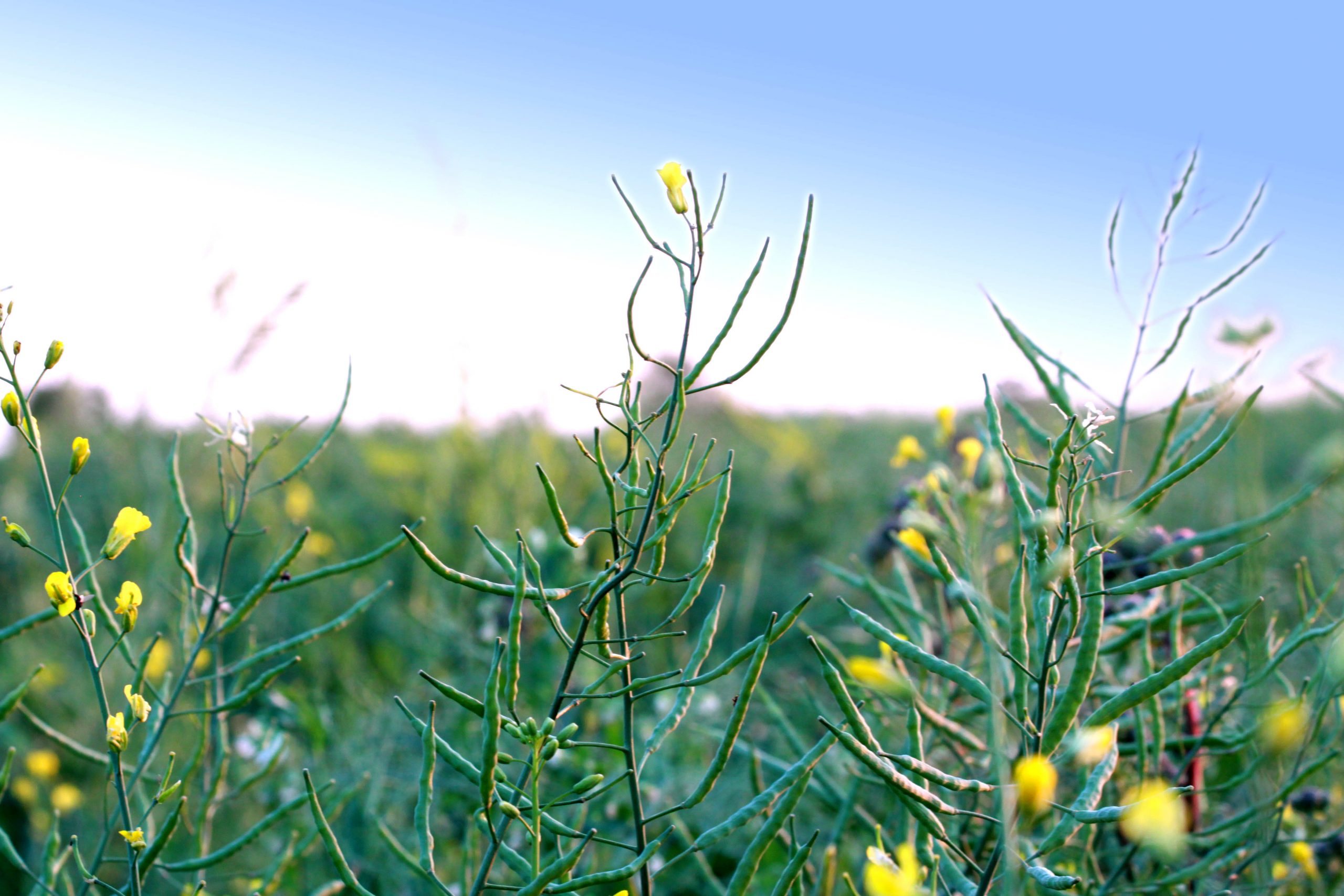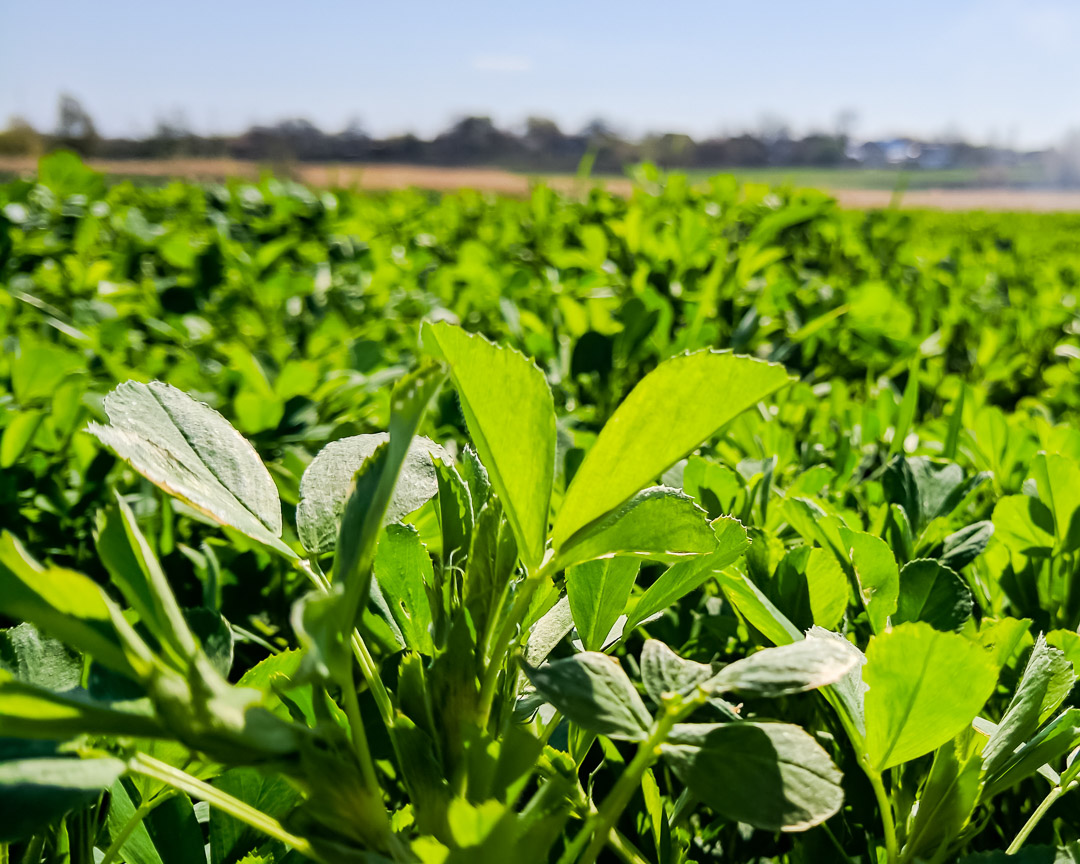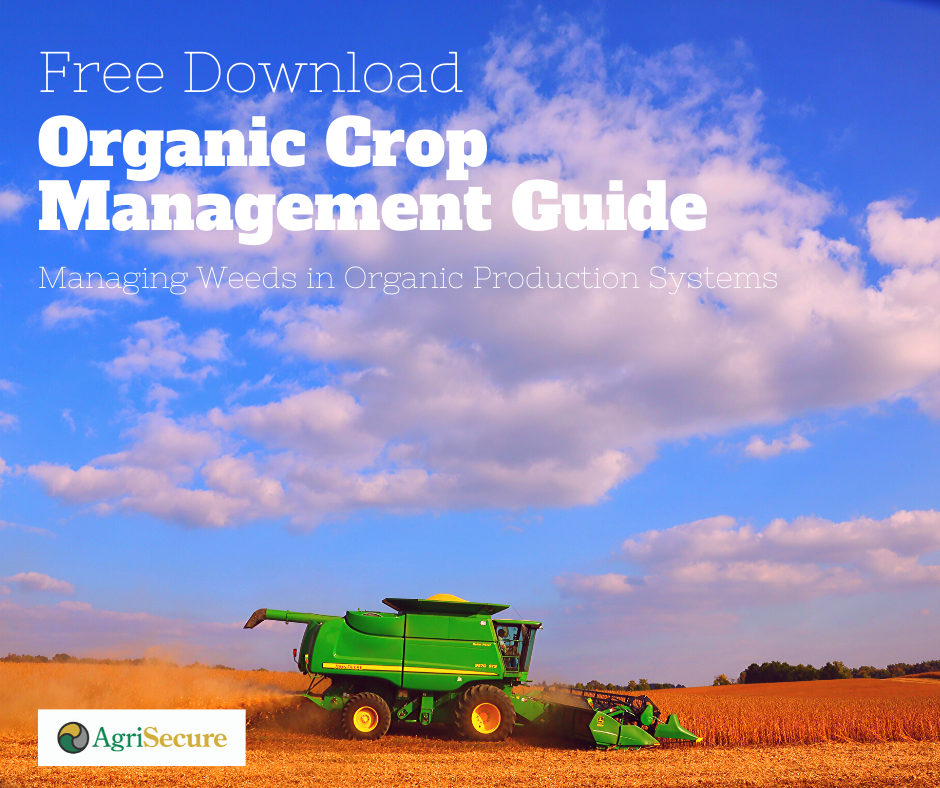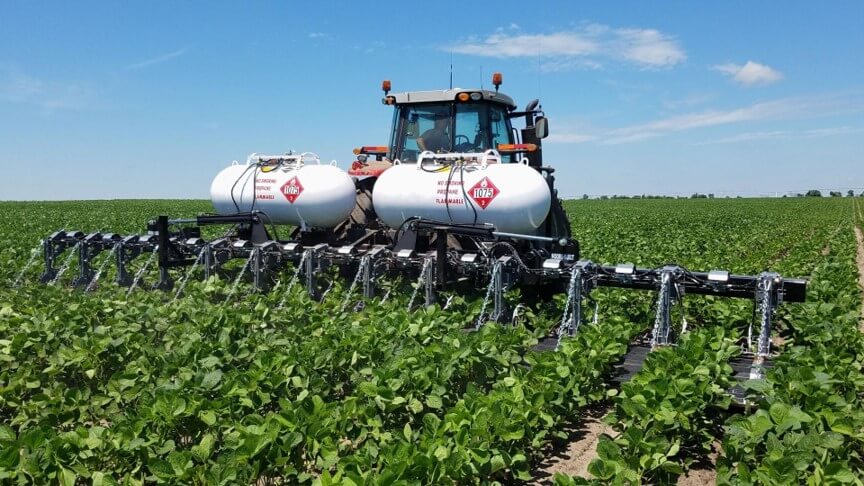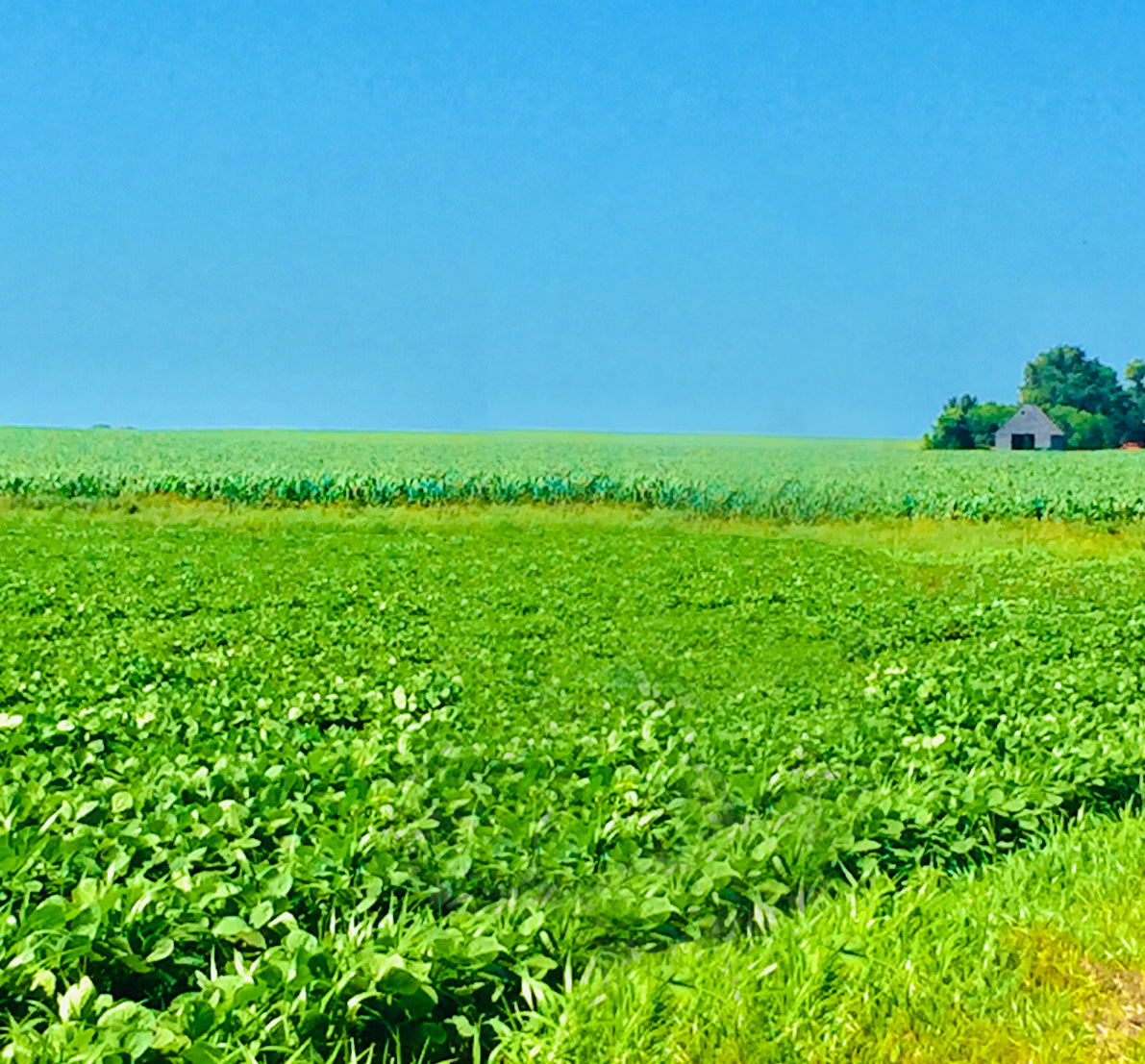- Published On: July 28, 2020
- Author: Bryce Irlbeck
Organic row crops can be sold for high premiums. And as an organic farmer, successfully controlling weeds is often central to achieving the highest level of profitability. Enter intercropping for profit and weed management!
Intercropping allows you to grow at least one high-value organic crop, such as yellow field peas, while effectively suppressing weeds and delivering agronomic benefits for the following crop year. It enables you to avoid tillage for weed control, too, which is a consideration if you’re worried about soil erosion. And there’s another bonus. You won’t have the labor crunches that can occur when cultivation overlaps with your organic corn and organic soybean crops.
Last year, B&B Irlbeck Farms partnered with Rhea Brothers to conduct organic intercropping trials. We set out to determine if intercropping provided better financial returns and long-term term agronomic benefits versus a soybean crop. Here’s our results (and spoiler alert: we absolutely intend to continue intercropping our fields).
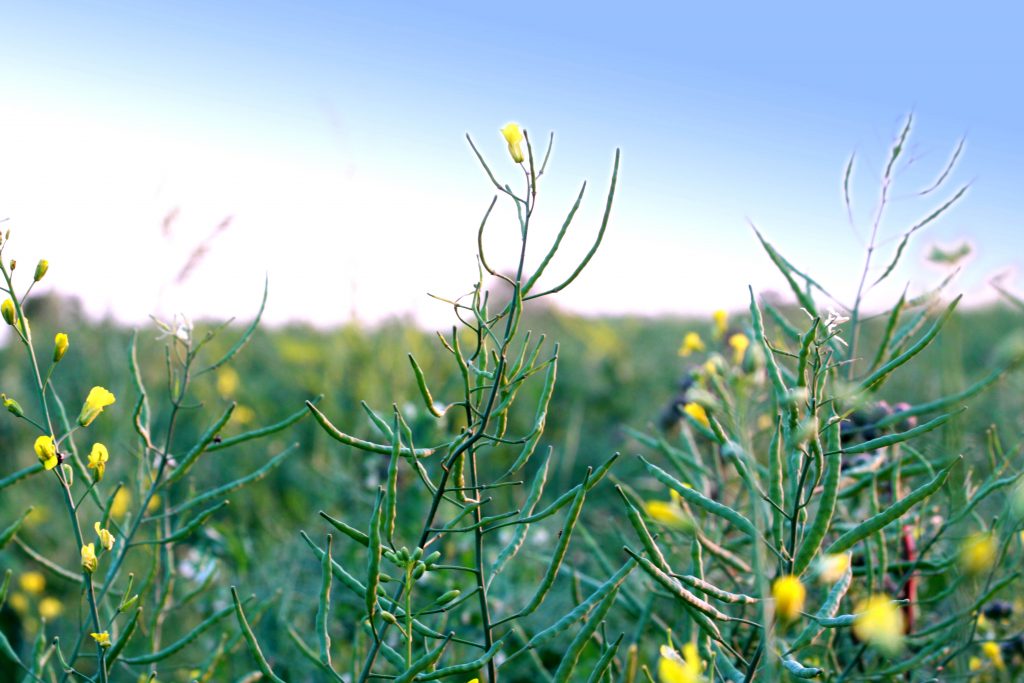
Intercropped: yellow field peas and canola
On B&B Irlbeck Farms, we trialed yellow field peas intercropped with canola on ten acres in Manning, Iowa. Using a double-disc opener on 7.5 inches, we put canola seed through the alfalfa seeder and peas through the drill at the same time. We seeded canola at the recommended rate of 3.5 pounds, while peas were seeded at 380,000 seeds per acre. We also did a few strips of peas and canola alone, to see how they compared to intercropping.
Pros: Peas and canola cultivated together they stood well. When grown by themselves, they fell flat to the ground. This resulted in a big mat of biomass that we could barely walk through, effectively keeping weed pressure low. It also required less tillage, with only one to two passes prior to planting.
Cons: Given the learning curve with intercropping, we strongly suggest that you start small. You’re more likely to have difficulties on land with a history of weeds and in low-lying areas that contain water.
In addition, canola and yellow soybeans transfer moisture when harvested. So if they site in a bin together, they’ll likely harden up and create large blocks of seed if not separated immediately. As a result, we needed extra capacity to separate at harvest. Cleaning can also be a labor-intensive task if a good process has not been established. Finally, it’s important to understand you’ll need a pickup head, swather, and grain cleaner for best results. This is especially true with peas and canola, but often times for small grains and other intercrops, too. It’s important to factor in equipment costs.
Bottom line
The canola yielded 20 bushels per acre and the yellow field peas yielded 30 bushels/acre. At organic prices of $17 and $15 per bushel, respectively, this resulted in $790 of revenue per acre. Expenses totaled $513.00. They included field conditioning (April and July), plus drilling and seed, harvesting, trucking, seed cleaning, rent, insurance, and other miscellaneous items. The result was a net profit of $277 per acre. That’s intercropping for profit and weed management!
Intercropped: yellow field peas and oats
Rhea Brothers Farm intercropped yellow field peas with oats on 27 acres in northeast Nebraska. They seeded oats around 1.25 bushels/ acre and the peas at a rate of 250,000 seeds per acre.
Pros: The combination of yellow field peas and oats provided excellent weed control. While the peas alone had a hard time shading out weeds, the two crops successfully suppressed weeds when grown together. The combination harvested in July also allowed for a good cover crop to follow before rotating to corn the next year.
Cons: It’s important to separate the two crops after harvesting, but they won’t harden up like peas and canola. This means you can store them in the bin and clean them later, if needed. One caution, though: the market for organic oats can be hit or miss. Prices can be lower, around $3.00 – $5.50 per bushel, depending on quality.
Bottom line
The field peas yielded 31 bushels per acre at $17 per bushel. The oats yielded 30 bushels per acre at $5.25 per bushel. This returned a total revenue of $684.50. Expenses for discing, drilling, seed, field conditioning, harvesting, trucking, rent, insurance and other items came to $506.50, providing a net revenue of $178.00 per acre.
We believe the outcome we achieved intercropping for profit and weed management could be even better! We conducted our trial on marginal, sloping ground, and we planted the crops late due to a wet spring. Under better soil and planting conditions, we’re confident an even greater return per acre could be achieved.
Key takeaways – and what we changed with our 2020 crop
Our trials established that intercropping can offer a good economic return along with a number of additional agronomic benefits. Still, as organic farmers who are continually learning, we knew we could make changes that would provide even greater success with the next crop. So, here’s what we tried:
Seeding rates
On B&B Irlbeck Farms, we determined last year’s seeding rate of 380,000 for yellow field peas was too high. We dropped it to 160,000 this year, only to discover the lower rate was too low. Next year, we’ll seed somewhere in between these high and low rates. Rhea Brothers Farm is also experimenting with the seeding rates for oats and yellow field peas. They plan to drop it to less than a bushel for oats and less than 200,000 for peas.
Complexity
Our trials demonstrated the importance of minimizing complexity. We quickly discovered that separating the yellow field peas and canola was a labor intensive task that required five people: one combining, one driving the grain cart, one driving the semi, and two cleaning the crops into separate bins. So, for 2020, we developed a different process. We unloaded a semi into a new grain cleaner that automatically separates the crops. This year, only one person handled the cleaning process and they completed it in a matter of hours.
Planning
As with any organic production, planning is key. It’s not always straightforward to source the seed and inoculum, and it’s important to match the maturity of the two crops so they’re ready for harvest at the same time. Be realistic about how long it’s going to take to get the crops seeded, too. Be forewarned, you may need to go over them twice. On B&B Irlbeck Farms, we plan to drill twice in a crosshatch pattern next year. This will provide a better outlay of seeds for weed control.
Our final thoughts on intercropping
It’s important to make decisions based on the numbers, and not on your emotions or gut feelings. We highly recommend starting small. It’s also necessary to accept it’ll probably take 2-3 years to learn how to intercrop at the highest level of success. Once you’ve mastered it, you’ll be intercropping for profit and weed management, too!
But if you enjoy pushing the boundaries of your operation, try intercropping. And if you’re eager to learn how to benefit your bottom line while reducing some tasks, try intercropping. It’s a new opportunity to raise high-value crops that might not do as well on their own.
If intercropping interests you, go for it! And, of course, we’d be happy to offer guidance. We can provide our firsthand advice on the best ways to get started. Contact AgriSecure today for a free consultation.
By Bryce Irlbeck, AgriSecure Founder and Owner of B&B Irlbeck Farms
Related Articles
-
Robotic Farming Tackles Weeds and Reduces Costs
Organic farmers know the best defense against weeds is to play offense. You need a game plan that keeps weeds from going to seed and emerging. Enter robotic farming. Robots solves organic weed control challenges Two of the key practices currently used for weed prevention are cover crops and tillage. A good cover crop stand […]
-
Cover Crops Bring Big Benefits to Organic Farms
We always stress the importance of a diverse crop rotation to achieve long-term organic success. But what if market opportunities for organic crops in your area are limited? How can you diversify your rotation with just a few cash crops? Answer: Cover crops. Even though you don’t sell them like cash crops, they can still […]
-
4 Keys to Choosing and Using Organic Crop Inputs
Growers understand that switching from a conventional farming system to organic means giving up certain products like genetically modified seed and synthetic herbicides. But that doesn’t mean organic farmers do not have crop input options. In fact, aside from nitrogen fertilizers and herbicides, most conventional inputs can be found in organic forms, and through use […]
-
Watch “Going Organic: Crops of the Future”
Thinking of going organic? Wondering what it might look like for your farm in the future? Watch the in-depth discussion between organic farmers J.P. Rhea AgriSecure founder J.P. Rhea, Travis Heide, and Rusty Olson at FBN’s Farmer2Farmer V event to gain insights into the path of organic so that you can make more educated decisions […]
-
Want Organic Premiums and Clean Fields?
AgriSecure understands that making the decision to “go organic” on some (or all) of your acres is a big deal. In particular, starting the transition process requires confidence in Weed Management practices and tools. AgriSecure has developed a FREE Guide to help farmers gain a better understanding of how weed management can be possible in […]
-
Long-Term Organic Success = Rotation, Rotation, Rotation
You’ve heard the saying, “location, location, location.” The real estate mantra is used to remind people that where a property is located is often the most important factor in its value. In organic farming, the same can be said about rotation. Having the right rotation in place is critical for year-to-year success and the long-term […]
-
Ag Tech Makes Large-Scale Organics Possible. And Profitable!
Many farmers believe modern ag technology doesn’t apply to organic production. And there is some truth to that. Many organic farmers have small, 40-acre operations where technology isn’t used. But for large-scale organic row-crop operations, a lot of the technology used on conventional farms can still be utilized, and often will result in a higher […]
-
5th-Generation Farmer Profits with Hog Manure in Organics
When Rusty Olson saw that the farm economy was “sliding sideways,” he started looking for opportunities to bring in more revenue from the farm. A fifth-generation farmer in Garner, Iowa, he had recently achieved his goal of expanding the family corn-and-soybean operation from 1,000 acres to 2,000. He wanted to focus on the farm and […]
-
Organic Transition Success Sits on a 3-Legged Stool
Becoming an organic producer does not happen overnight. Obtaining organic certification requires a 36-month period where a field has not had any prohibited substance or genetically modified crops on it. These 3 years known as the transition process can either set your organic operation up for success or struggles. To help ensure success, we recommend […]
-
Profits and Soil Health Draw 4th-Generation Farmer to Organics
Chuck Thompson was tired of living hand-to-mouth. Like many farmers, he grew up on a traditional, corn-and-soybean operation in Humboldt, Iowa, and returned to it after college. Today, he and his brother farm with their father, making them the fourth generation of the family farm. But in the last decade, the Thompsons have struggled to […]
Get in the know
Our newsletter, it’s a quick read. You’ll get industry news plus all the latest organic insights. Who doesn’t want that?
